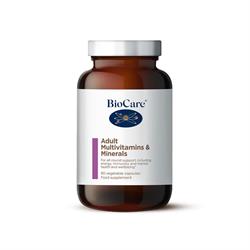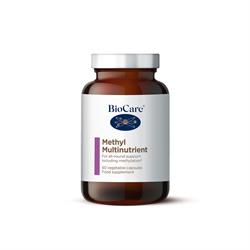4 Pregnancy Myths Debunked
If you ever meet a pregnant woman, she’ll tell you that everybody’s got something to say.
By the time your pregnancy is over, you’ve heard it all.
There are lots of myths about diet and exercise during pregnancy.
One that I heard often is that you can’t be vegan and pregnant.
Or during my first pregnancy, that you can’t be vegetarian and pregnant.
I think that my six foot two, 19-year-old son testifies to the fact that those myths are completely false.
There are a lot of these old wives tales going around…
You might hear that you shouldn’t take up exercise when you’re pregnant.
Sure, deadlifting or doing acro-yoga are not good choices if you’ve not been practising prior to pregnancy.
There’s never a bad time to start exercising.
Yoga and pilates are ideal during pregnancy – as they’re low impact and safe.
They also focus on a lot of core work.
In this article, we’ll explore (and debunk) a few pregnancy myths.
Myth #1 Being Vegan or Vegetarian is Bad During Pregnancy
This is something that I heard A LOT. But my first vegetarian pregnancy was a success, and my second vegan pregnancy resulted in a 10lb baby who was huge and super strong. It’s always a good idea to optimise your diet during pregnancy.
If you’re vegetarian or vegan it’s advisable to take a few supplements during, and prior to conceiving, such as vitamin B12, vitamin D and folic acid. The NHS suggests ensuring to eat high quantities of iron-rich food, such as pulses, dark green vegetables and dried apricots. For calcium dried fruit, sesame seeds (or tahini), fortified vegan mylk as well as dark green leafy vegetables and pulses.
Myth #2 Women Can Only Do Very Specific Prenatal Exercises
Some people state that exercising during pregnancy pulls nutrients from the baby, and the baby won’t grow. That’s simply not true. In fact, a 2002 study found that exercise during pregnancy reduces cesarean section rates, and manages gestational diabetes. Additionally, it found that fetal weight gain was normalised (not reduced) when a pregnant mother exercises. Women that exercise actually have a higher functioning placenta than those who don’t exercise.
One reason is that blood flows better when we exercise, and waste is excreted more readily. In general, a baby will pull the nutrients from the mother when they need it, the baby is normally protected. Keeping active during pregnancy is a must for a healthy birth and recovery.
Myth #3 You Shouldn’t over-exert Yourself During Pregnancy
Cardio is often avoided during pregnancy. Some people state that your heart rate shouldn’t rise above 140 beats per minute, or the baby will get boiled like an egg. Sure, you should avoid heat exhaustion and ensure that you’re properly hydrated. That’s what you should look out for. But cardio is fine in the right environment, so long as you don’t overdo it.
Heat exhaustion, rather than over-exertion during the summer months is more likely, and it can increase a baby’s risk for birth defects. Many women say that they feel hotter during pregnancy. So keeping cool and hydrated is a great idea. During the first trimester, a woman’s body temperature shouldn’t rise above 39.2oc in the first trimester (12 weeks of pregnancy). Therefore exercising in very hot weather, or during a heatwave in the first trimester is to be avoided.
Myth #4 Stress During Pregnancy is Always Bad for Baby
For sure, high levels of stress and chronic stress can cause problems for both mother and baby. Plus high levels of stress can increase the chances of having a low birthweight baby. You need to watch out for high levels of stress during the first trimester, as that’s when it is most likely to do damage. On the flip side, mild to moderate stress during pregnancy has been found to advance mental and motor development in 2-year-olds.
This doesn’t mean that women should seek out stress during pregnancy. Janet A. DiPietro, PhD, a developmental psychologist and professor at the Johns Hopkins Bloomberg School of Public Health says; “Mild to moderate stress has been proposed to be important to successful adaptation to the environment after birth and necessary for optimal brain development.” concluding that these findings should enable women to “stop worrying about worrying.”
What Kind of Exercise Should You Do?
Prenatal classes are often very relaxing and restorative. But that might not be what you’re looking for if you really want to work out and get your blood flowing. The prenatal classes are ideal for people who haven’t been exercising prior to conception. If you already practice yoga or pilates, there are some modifications that you need to make to your normal routine.
Focusing on core strengthening, posture and stability will enhance your pregnancy, birth and recovery. You should avoid inversions (like handstands), jumping and major twists. The additional abdominal strength and endurance from exercising can really help with giving birth. After giving birth, you should wait until after 6 weeks postpartum to get back to your normal yoga or pilates routine.
The Bottom Line
Following healthy lifestyle practices are important during all stages of life. Arguably, having a baby is the biggest athletic event of your life. Making sure that you’re prepared physically and mentally will greatly enhance the experience of bringing a new life into the world. Exercise is safe, so long as you listen to your body and don’t push yourself too hard. Yoga and pilates are great, as is jogging or other mild to moderate exercise practices. Your diet should be filled with health-promoting fruits, vegetables, nuts seeds and legumes. Everyone is individual, so you want to always do what feels right for you.




